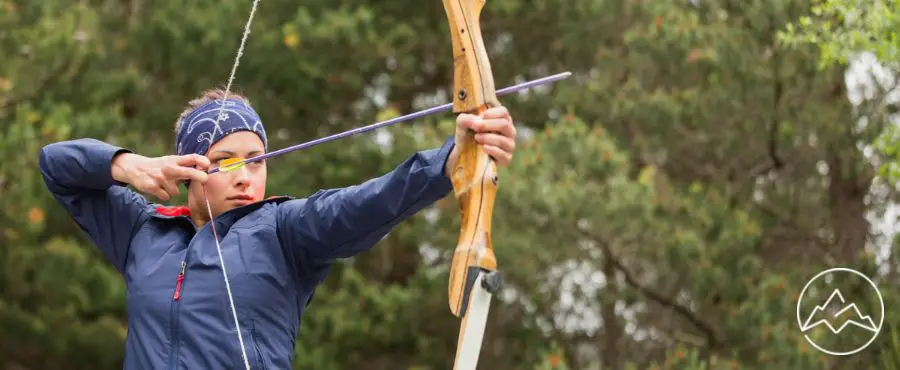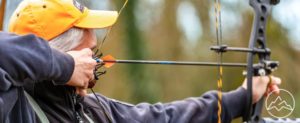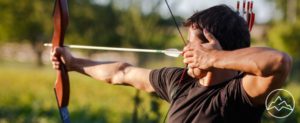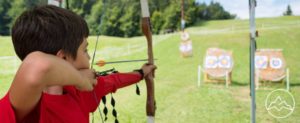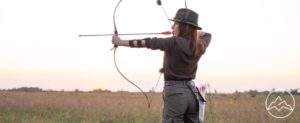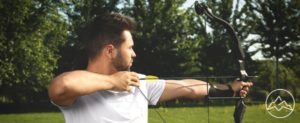Mastering bow sight adjustment is a fundamental skill for archers seeking precision and accuracy in their shots. The bow sight, akin to sights on a firearm, plays a crucial role in aiming and hitting the target. Understanding the different types of bow sights and their advantages and disadvantages is key to making informed decisions. Horizontal and vertical adjustments allow for fine-tuning the sight’s position, while the 3rd axis adjustment is essential for extreme shooting angles. Basic tools like Allen wrenches are necessary for making adjustments, and a laser alignment tool can be beneficial but not essential. However, common issues such as offset pin grouping, adjustment shortage, and sight clearance can hinder accuracy. Seeking assistance from a local archery shop is recommended for resolving any sight adjustment issues. By mastering bow sight adjustment, archers can enhance their precision and hit the bullseye consistently.
Key Takeaways
- Adjusting the bow sight is crucial for achieving accuracy and precision in archery.
- Bow sights have three major types of adjustments: horizontal, vertical, and 3rd axis.
- Common sight adjustment issues include offset pin grouping, adjustment shortage, and sight clearance.
- Seeking help from a local archery shop is recommended for adjusting the bow sight and resolving any issues.
Types of Bow Sights
There are different types of bow sights available for archers to choose from, each with its own advantages and disadvantages, in order to improve accuracy and precision in archery. The benefits of using a bow sight include enhanced target acquisition, increased shot consistency, and improved overall accuracy. Choosing the right bow sight for your needs depends on factors such as shooting style, budget, and personal preference. The three main types of bow sights are fixed pin sights, movable pin sights, and single pin sights. Fixed pin sights are the most common and offer multiple pins set at different yardages. Movable pin sights allow for individual pin adjustment, making them versatile for different distances. Single pin sights provide a clear sight picture and are ideal for long-range shooting. Understanding the advantages and disadvantages of each type of bow sight is crucial in selecting the most suitable one for achieving optimal accuracy and precision in archery.
Adjustment Methods
One interesting statistic to consider is that proper alignment of the 3rd axis can improve accuracy at extreme angles by up to 25%. Adjusting a bow sight requires the use of specific tools, such as Allen wrenches, to make necessary adjustments. The benefits of proper adjustment are significant, as it ensures accuracy and precision in archery. By making horizontal and vertical adjustments, archers can fine-tune their shots and achieve the desired impact point. Multi pin sights may require individual adjustment for different yardages, allowing for versatility in shooting. Additionally, adjusting the 3rd axis is crucial for extreme angles, as it involves adjusting the sight level or extension bar. Overall, the use of proper adjustment tools and techniques enhances the performance of a bow sight and ultimately improves accuracy and precision in archery.
Common Issues and Solutions
A common issue that can arise when adjusting a bow sight is offset pin grouping, which can be resolved by centering the pins within the sight housing by moving the entire sight guard. Offset pin grouping refers to the pins not being aligned properly within the sight housing, resulting in inconsistent arrow placement. To fix this issue, the archer can loosen the bolts holding the sight guard in place and adjust its position until the pins are centered. Another common issue is sight clearance, which can be caused by factors such as a high anchor point or a low peep sight. Troubleshooting sight clearance may involve adjusting the bow poundage or getting a new sight that provides better clearance. Seeking assistance from a local archery shop can be helpful in addressing these common issues and finding appropriate solutions.
Frequently Asked Questions
What are some tips for properly aligning the sight housing with the bowstring?
Aligning the sight housing with the bowstring is a crucial step in achieving accuracy and precision in archery. To properly align the sight housing, here are some helpful tips:
1) Start by ensuring that the sight housing is centered with the bowstring.
2) Use a level to ensure that the sight housing is perfectly vertical.
3) Avoid the common mistake of misaligning the sight housing, as this can lead to inaccurate shots.
4) Double-check the alignment before each shot to maintain consistent accuracy. By following these tips, archers can optimize their sight housing alignment for improved shooting performance.
How can I determine the correct yardage for each pin on a multi pin sight?
Determining the correct yardage for each pin on a multi pin sight is essential for achieving accuracy in archery. To do this, archers can use a method called “gap shooting” or “point-on distance.” Gap shooting involves practicing at different distances and noting the gap between the target and each pin. By doing this, archers can determine the yardage for each pin and make precise adjustments. This method helps prevent sight clearance issues by ensuring that the pins are aligned correctly with the target at different distances.
Are there any alternative methods for adjusting the 3rd axis without a laser alignment tool?
Adjusting the 3rd axis without a laser alignment tool can be achieved through alternative methods. One method involves using a bubble level to ensure the sight is level with the bow limb. Another method is to observe the arrow flight at extreme angles and make adjustments accordingly. While a laser alignment tool offers precise alignment, alternative methods provide advantages such as simplicity and cost-effectiveness. However, it is important to note that a laser alignment tool can provide more accurate and efficient adjustments for bow sight alignment.
How can I prevent sight clearance issues caused by a low peep sight?
To prevent sight clearance issues caused by a low peep sight, proper alignment tips can be followed. Firstly, ensure that the peep sight is positioned at an appropriate height to provide adequate clearance between the bowstring and the sight. Secondly, adjusting the anchor point can help in achieving a higher peep sight position. Lastly, increasing the bow poundage can also assist in reducing sight clearance problems. By implementing these measures, archers can effectively prevent sight clearance issues and improve their accuracy in archery.
Can you recommend any resources or tutorials for beginners to learn more about adjusting bow sights?
A comprehensive beginners’ guide to adjusting bow sights can provide step-by-step tutorials and valuable resources for those new to the process. These guides often offer in-depth explanations of the different types of bow sights and their adjustments, including horizontal, vertical, and 3rd axis. They may also provide tips on using basic tools like Allen wrenches and laser alignment tools. By following these guides, beginners can gain the knowledge and experience necessary to achieve precise and accurate bow sight adjustments.
Conclusion
In conclusion, mastering bow sight adjustment is crucial for achieving precision and accuracy in archery. Bow sights are essential accessories that help archers aim their shots effectively. By understanding the different types of bow sights and their advantages and disadvantages, archers can choose the one that suits their needs. The three major types of adjustments – horizontal, vertical, and 3rd axis – allow archers to fine-tune their aim and account for extreme angles. Common sight adjustment issues can be resolved with the help of basic tools and guidance from local archery shops. By mastering bow sight adjustment techniques, archers can improve their accuracy and hit the bullseye consistently.

